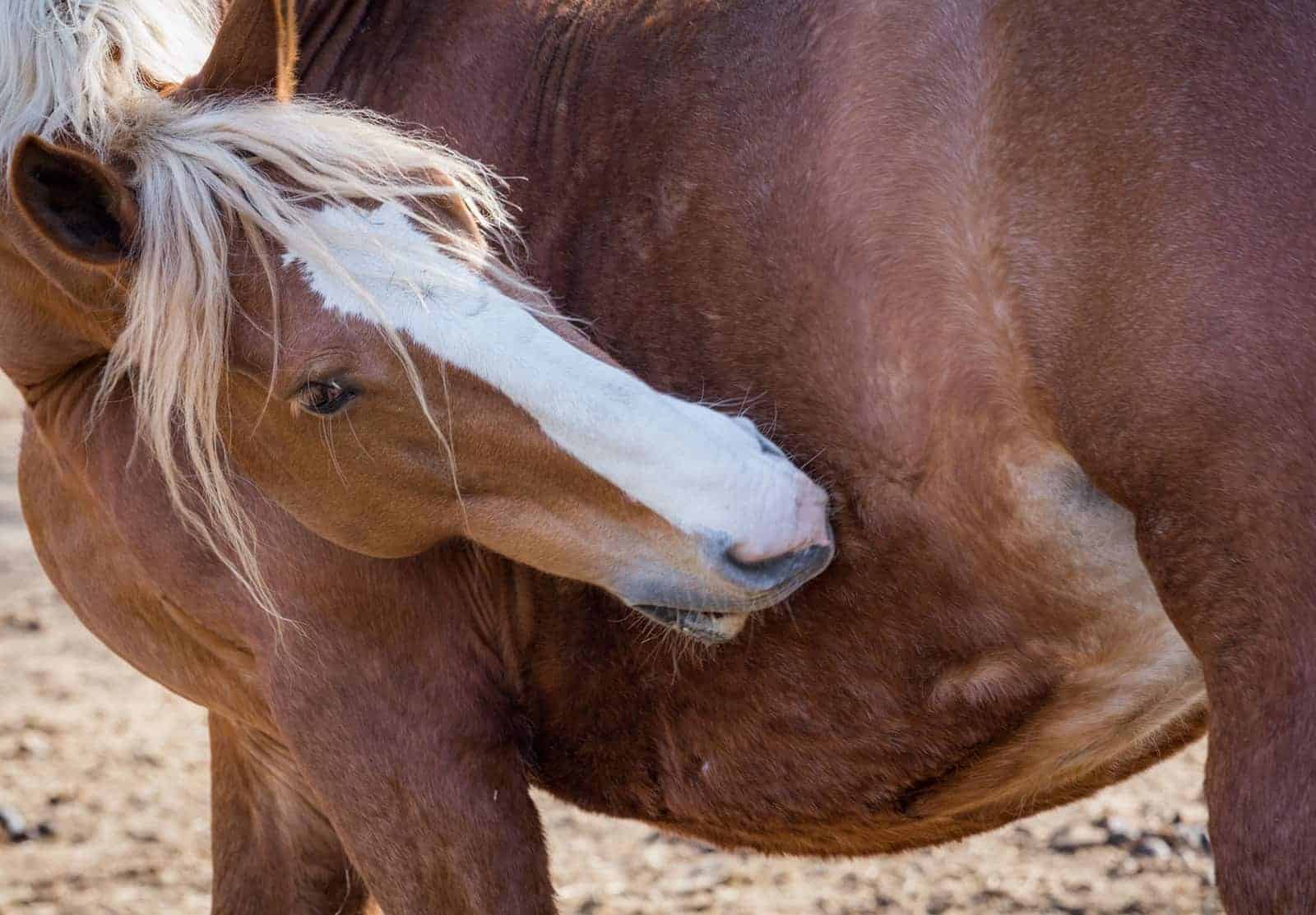Atopic Dermatitis in Horses

Atopic dermatitis, defined as an allergic reaction to environmental allergens (such as pollens, barn dust, molds, etc.), is probably more common in horses than currently reported. It can be seasonal or, in climates such as California, present year round.
The three most common presentations are urticaria (“hives”), urticaria with pruritus (itching), and pruritus alone. Pruritus most commonly affects the face and trunk. Seasonal signs would be most consistent with allergy to pollens; year-round signs would be more consistent with an allergy to molds or barn dust. Urticaria, secondary to atopic dermatitis, could be a familial problem in some horses.
Diagnosis of atopic dermatitis is based on clinical signs and the exclusion of other diagnoses (especially Culicoides allergy). Horses can have a secondary bacterial skin infection (pyoderma), typified by excess scale, particularly in the shape of a circle (epidermal collarettes).
Atopic Dermatitis and the USEF Drugs and Medications Rules
The most common medications used for the treatment of atopic dermatitis in horses are considered forbidden under the United States Equestrian Federation’s (USEF) Equine Drugs and Medications Rules.
As identified by Stephen D. White, DVM, Dipl. ACVD, these usually include antihistamines and corticosteroids. In addition to limiting the use of forbidden substances, the Equine Drugs and Medications Rules provide for legitimate use of these medications with the proper withdrawal and documentation. Conditions for therapeutic administrations of forbidden substances include that the medication must be for the diagnosis or treatment of an existing illness or injury, and that the horse must be withdrawn from competition for a period of no less than 24 hours following the administration.
Additionally, a medication report form must be filed in the competition office with the show steward or technical delegate within one hour following the administration. Medication reports can also be filed online.
One corticosteroid, dexamethasone, is quantitatively restricted and no medication report form is necessary. However, there are recommendations for its use that need to be strictly followed to avoid an excessive level of drug in the horse at the time of competition. These recommendations can be found online.
The treatment of atopic dermatitis using hyposensitization is permitted under USEF rules as long as no injections take place within the 12 hours prior to competing; no medication report form is required. For further information regarding the use of medications while remaining compliant with the Equine Drugs and Medications rules, please visit https://www.usef.org/_IFrames/Drugs/Default.aspx or call 800/633-2472.
—Stephen Schumacher, DVM, Chief Administrator, USEF Equine Drugs and Medications Program
Intradermal tests (IDT) or serum allergy tests can be performed to identify allergens which could be used for hyposensitization (allergy shots, or more recently available, oral drops). Horses with atopic dermatitis and recurrent hives generally have a higher incidence of positive reactions than healthy horses, but the diagnosis (as in other species) cannot solely be made on the basis of the IDT or serologic testing alone. Any testing should be interpreted in light of the history of the disease and used to determine which allergens might be useful to use in hyposensitization, should the owners elect that route of treatment.
Medical therapy can include corticosteroids; prednisolone or dexamethasone are the most commonly used. Prednisolone seems to be better absorbed orally in horses than prednisone. The injectable dexamethasone solution can be used orally, although the bioavailability is only 60%-70% of the injectable route.
Antihistamines—including hydroxyzine pamoate, cetirizine, or doxepin (a tricyclic anti-depressant with antihistaminic effects)—can be quite effective. Antihistamines rarely cause either drowsiness or excitability in horses, although the author has seen these adverse effects in less than 5% of horses receiving these drugs. The commonly used antihistamine pyrilamine maleate has been shown to have poor bioavailability when given orally in the horse, but detectable in the urine up to one week after a single dose, which could present difficulties with drug testing withdrawal times. Some clinicians have noted improvement when an essential fatty-acid product is added to the feed as an adjunctive treatment.
Atopic dermatitis has been successfully managed with hyposensitization, with horses showing improvement as early as two months into treatment. However, a full 12 months of hyposensitization should be given before fully evaluating its effectiveness, and veterinarians should maintain consistent communication with the client to monitor the progress of the treatment and to encourage the owner to continue with the injections for the full year. While in other domestic species it is thought that most patients will need to be maintained on the injections for life, in the horse, this may not be true, as a small number of horses have had the hyposensitization injections stopped and did not relapse. In general, approximately 70% of atopic horses improve with hyposensitization.
CONTACT—Stephen D. White, DVM, Dipl. ACVD—530/752-5908—sdwhite@ucdavis.edu—University of California, Davis, School of Veterinary Medicine, Davis, California
This is an excerpt from the July 2015 Equine Disease Quarterly, which at the time was funded by underwriters at Lloyd’s, London, brokers, and their Kentucky agents.
Written by:
Equine Disease Quarterly
Related Articles
Stay on top of the most recent Horse Health news with















